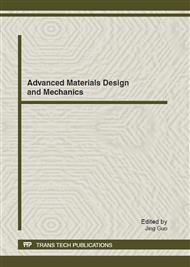[1]
Thomas L. McKinley. , Model Predictive Control: A Unified Approach for Urea-Based SCR Systems, SAE Int. J. Fuels Lubr. 3(5): 2010-01-1184, (2010).
DOI: 10.4271/2010-01-1184
Google Scholar
[2]
Ming-Feng Hsieh, Control of Diesel Engine Urea Selective Catalyst Reduction Systems,. PhD Dissertation, Ohio State University, (2010).
Google Scholar
[3]
T. V. Johnson, Review of Diesel emissions and control, SAE 2010 World Congress, SAE paper 2010-01-0301, (2010).
Google Scholar
[4]
M. Hsieh, M. Canova, and J. Wang, Model Predictive Control Approach for AFR Control during Lean NOx Trap Regenerations, SAE 2009 World Congress, SAE Paper 2009-01-0586, (2009).
DOI: 10.4271/2009-01-0586
Google Scholar
[5]
M. Hsieh, J. Wang, and M. Canova, Two-level nonlinear model predictive control for lean NOx trap regenerations, ASME Journal of Dynamic Systems, Measurement and Control, Vol. 132, 041001 (13 pages), (2010).
DOI: 10.1115/1.4001710
Google Scholar
[6]
M. Hsieh, M. Canova, and J. Wang, Model predictive control approach for AFR control during lean NOx trap regenerations, SAE International Journal of Fuels and Lubricants, Vol. 2, No. 1, p.149 – 157, (2009).
DOI: 10.4271/2009-01-0586
Google Scholar
[7]
Tinghong Tao, Yuming Xie, Steven Dawes and Isabelle Melscoet-Cgauvel. Diesel SCR NOx Reduction and Performance on Washcoated SCR Catalysts [C]. SAE, 2004-01-1293.
DOI: 10.4271/2004-01-1293
Google Scholar
[8]
Shinichi Saito, Ritsuko Shinozaki, Akira Suzuki, Hiroshi Jyoutaki and Yoshinaka Takeda. Development of Urea-SCR System for Commercial Vehicle-Basic Characteristics and Improvement of NOx Conversion at Low Load Operation [C]. SAE, 2003-01-3248.
DOI: 10.4271/2003-01-3248
Google Scholar
[9]
C. Scott Sluder, John M.E. Storey, Samuel A. Lewis and Linda A. Lewis. Low Temperature Urea Decomposition and SCR Performance [C]. SAE, 2005-01-1858.
DOI: 10.4271/2005-01-1858
Google Scholar
[10]
R.J. Ong, J.T. Dawley and P.G. Clem: submitted to Journal of Materials Research (2003).
Google Scholar
[10]
Maruthi N. Devarakonda, Dynamic Modeling, Simulation and Development of Model-Based Control Strategies in a Urea-SCR Aftertreatment System in Heavy Duty Diesel Engines, PhD Dissertation, Michigan Technological University, (2008).
Google Scholar
[11]
E. Tronconi, L. Lietti, P. Forzatti, and S. Malloggi. Experimental and Theo-retical Investigation of the Dynamics of the SCR-DeNOx Reaction, Chemical Engineering Science, 51(11): 2965–2970, (1996).
DOI: 10.1016/0009-2509(96)00182-0
Google Scholar


